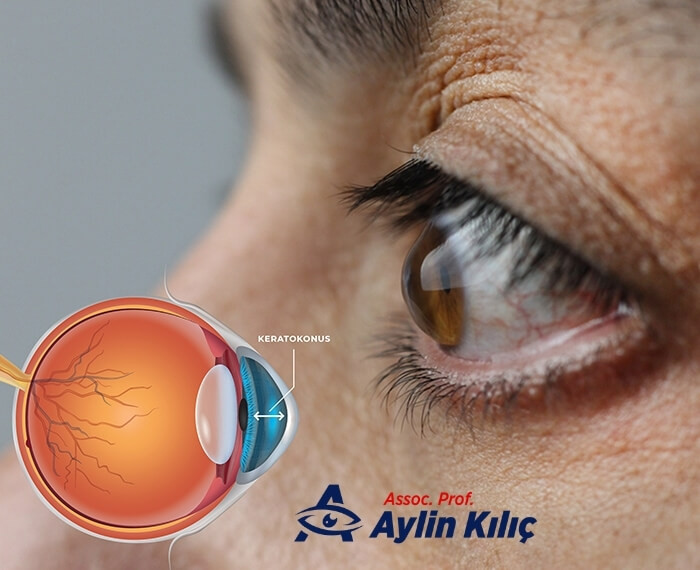Keratoconus, a progressive eye disorder that causes the cornea to thin and bulge into a cone shape, can significantly affect a person’s vision and quality of life. Various treatment options have been explored over the years to improve vision quality and effectively manage this condition. One of these approaches that has recently attracted attention is hybrid treatment. In fact, there is no academically or scientifically published treatment called Hybrid laser treatment. In the most general sense, laser treatment is not suitable for keratoconus.
We are adding our content that we have written about this subject before right here. Yes, keratoconus patients are not suitable for laser treatment, but the method called Athens Protocol includes laser and cross-link treatment. However, there seems to be some confusion about what exactly constitutes hybrid treatment, especially in the context of keratoconus. Let’s clarify this a little bit more.
Let’s start by addressing a common misconception: What is Hybrid Therapy?
Hybrid treatment does not include laser treatment. Instead, it primarily involves the use of specialized contact lenses, specifically scleral contact lenses. These lenses are designed to cover the irregular corneal surface characteristic of keratoconus and provide better vision and comfort for individuals with the condition.
Despite claims or misconceptions to the contrary, there is no widely recognized or academically accepted hybrid form of treatment for keratoconus that includes laser therapy. It is important to clarify this point to avoid any confusion or misinformation regarding treatment options for this eye disorder.
However, as mentioned above, in the field of accepted treatments for keratoconus, one protocol has gained considerable recognition: The Athens Protocol. This protocol involves a combination of topography-guided laser therapy and corneal collagen cross-linking (CXL).
Topography-guided laser therapy aims to reshape the cornea, correcting irregularities in its curvature and improving visual acuity.

Meanwhile, corneal collagen cross-linking is a procedure that strengthens the cornea by promoting the formation of additional cross-links between collagen fibers, thus stabilizing the cornea and halting the progression of keratoconus.
The Athens Protocol has been extensively studied and validated in academic and clinical settings and has shown promising results in slowing or halting the progression of keratoconus and improving visual outcomes for patients.
It is crucial for individuals with keratoconus and healthcare professionals to rely on evidence-based treatments backed by scientific research and academic consensus. While the concept of hybrid therapy may sound appealing, it is important to distinguish between proven treatments and speculative or unvalidated approaches.
Conclusion
Thus, we have explained what hybrid therapy is and what are the misconceptions about hybrid therapy. To summarize briefly, when discussing treatment options for keratoconus, it is very important to understand that hybrid therapy primarily involves scleral contact lenses and does not include laser therapy. The Athens Protocol developed by Dr. Kaneloppoulos, which includes topography-guided laser treatment and corneal collagen cross-linking, is a well-established and academically accepted approach to managing this condition.
By providing clarity and accuracy in our understanding of keratoconus treatments, we can better serve the needs of patients and promote optimal outcomes in their eye care journey.




